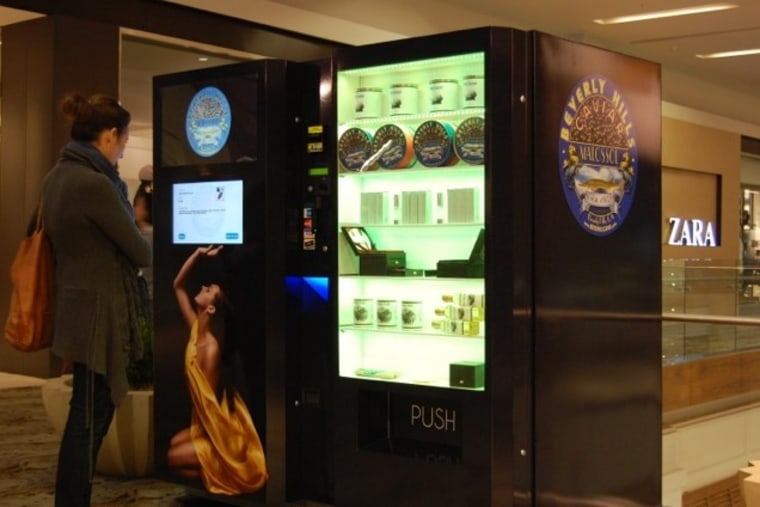Craving caviar in Los Angeles? There’s a vending machine for that.
Head to three local malls – Westfield Century City, Westfield Topanga and Burbank Town Center – and you’ll see one of the brand new machines dispensing the prized roe, as well as truffles, escargot and mother-of-pearl spoons.
Prices start at $5, going all the way up to $500, which will get you one ounce of Imperial River Beluga Caviar.
The project is the brainchild of Kelly Stern, who co-owns Beverly Hills Caviar – a gourmet food supplier located in the tony California community.
The business plan: Reach customers in wealthy neighborhoods surrounding the malls who may not have convenient access to caviar and expose everyday shoppers to the delicacy, especially younger ones.
“All my friends and family knew about this for a year-and-a-half and no one wanted to tell me that I was crazy, but I could see it in their eyes,” Stern said.
“I did not know what was going to happen when people saw it.”
Stern shopped around the world to find the right kind of vending machine – it had to keep the caviar cold, have a touch screen, an Internet connection and an attractive display for its gourmet contents. It also had to accept credit cards as well as cash.
She ended up buying parts from seven different countries and putting everything together in Los Angeles. Each machine costs about $85,000 – including hardware, software, security and maintenance – and has about $50,000 worth of inventory inside. The caviar is sold in jars and stays fresh for about a year.
Stern wants to franchise the business to “every single city in America and the world” when she has more experience with the machines, which she describes as experimental. Stern says no one has ever thought of caviar as a turnkey enterprise, something she wants to change.
“A lot of the people that sell caviar now are old people. They are a dying species and they don’t cater to the young people at all,” Stern said.
“So I’m seeing all the teenagers that stop by as my future assets. They will grow up and become the president of the U.S. or the president of Microsoft and they will think about caviar. They will remember that they went into the mall and saw the machine and that’s where they are going to buy their caviar.”
The project has attracted lots of attention since the machines were unveiled on last week on Black Friday, prompting Stern to hire a publicist – not to promote the venture, but to manage the curiosity it has sparked.
Industry observers, however, were skeptical whether the business model would be a success.
“It’s interesting, it’s a conversation starter and it’s a marketing tool… (but) I don’t think it’s going to sweep the nation,” said Tim Sanford, editor-in-chief of “Vending Times,” adding that his staff chuckled when they heard of the concept.
“My guess is that most people who want caviar know how to get it.”
Vending machines often put much-desired products in high-traffic areas where they can be sold swiftly to people who are there for some other purpose, so the caviar angle sounds more like a way to generate buzz, Sanford said.
But Stern projects she will recoup her money in the next few months, especially with the help of the holidays and awards season in Los Angeles.
“Everybody is talking about it. This is a dream come true,” she said.
